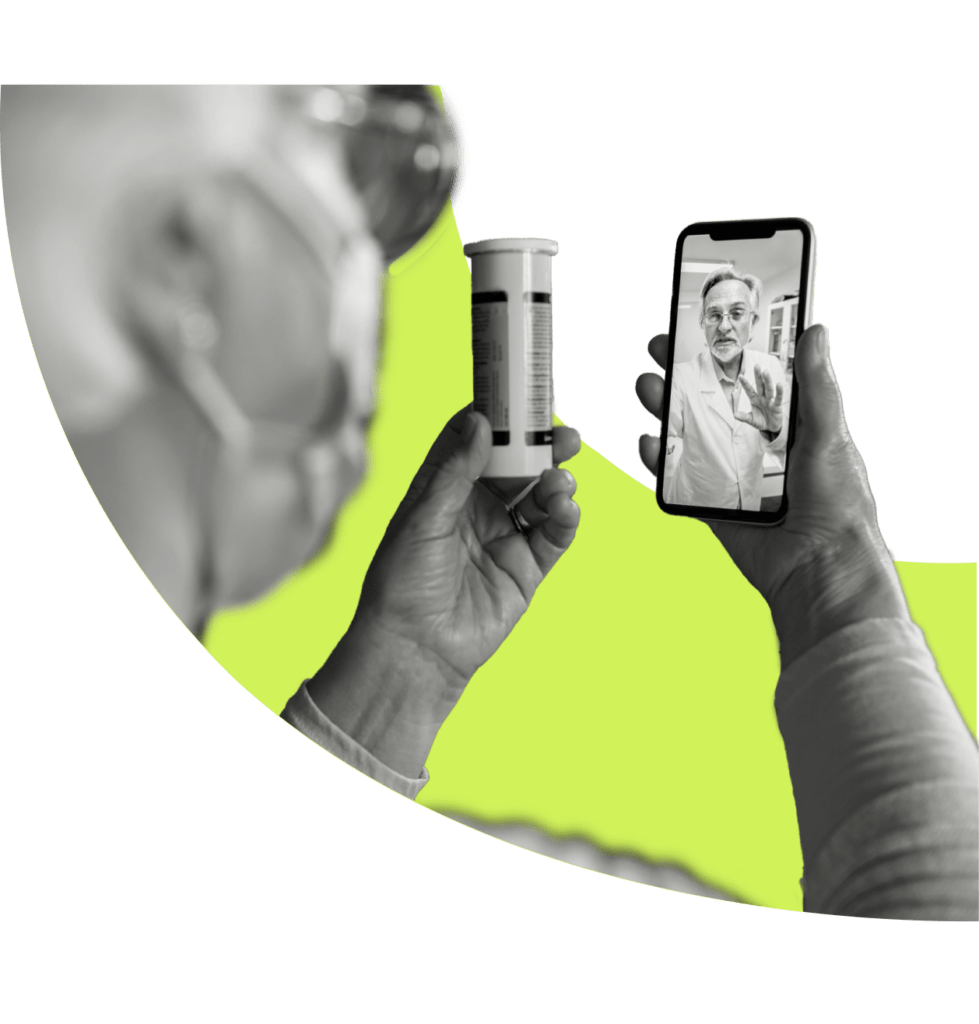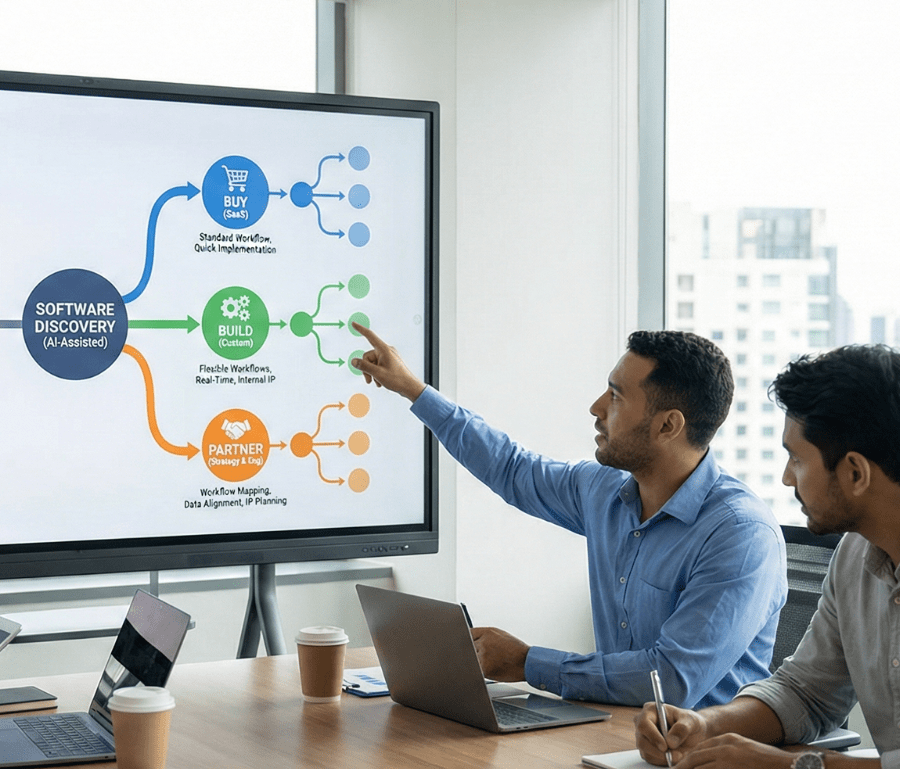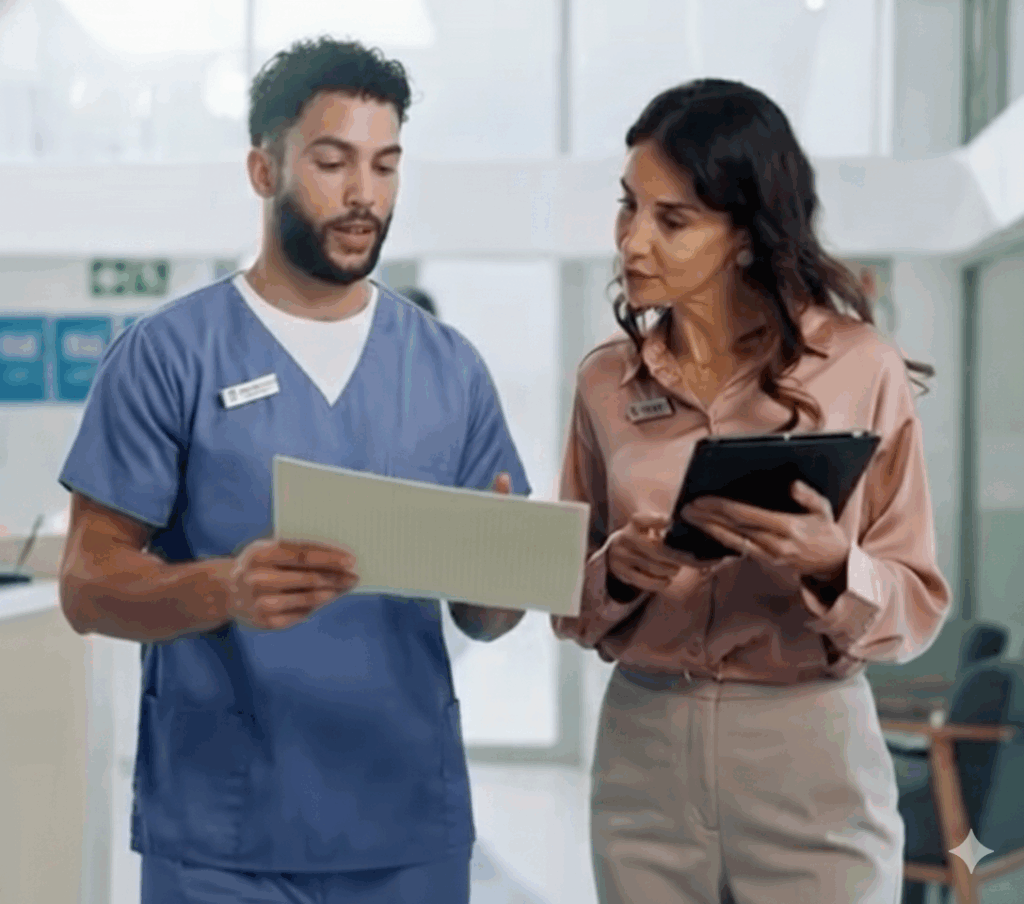Nothing can make us feel quite as human as being a patient in today’s healthcare system. It’s confusing, expensive, and a bureaucratic mess. When we’re sick and scared, we put our trust in others, but our current system can leave us feeling powerless. In a way, we’re at our most vulnerable when we’re a patient.
At Digital Scientists, we want to empower people. We want to help fix a broken system. We’re committed to working on healthcare solutions that can help patients, loved ones, and caregivers gain control. And we do this by focusing on the human experience.
With the promise to increase access, improve outcomes, and reduce cost, our firm is all in. We want to work on solutions that help people feel more empowered and help others deliver on that mission.
Has healthcare innovation left the patient behind?
In the U.S., we’ve witnessed remarkable innovation in medical devices and equipment. From hip replacements to MRIs, we’ve accelerated innovation to dramatically improve medical delivery and patient outcomes. We marvel at the speed in which we developed a Covid-19 vaccine, rolling it out to millions of people in a matter of months.
But when it comes to improving the patient experience, innovation hasn’t kept pace. Consider your visits to the doctor prior to COVID. Has the experience changed much over the decades? Sure, computers arrived, but once they appeared, doctors and nurses fixed their eyes on screens rather than on their patients. The gains we’ve made in access to medical data may have come at the expense of human interaction.
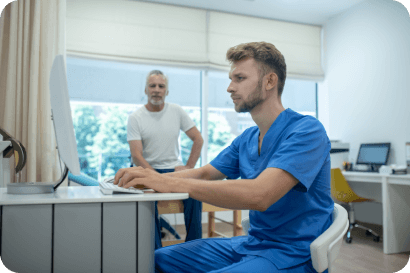
Healthcare’s shift to the patient experience
But we’re about to see a major shift. Research published by McKinsey & Co. shows that healthcare ecosystems of the future increasingly will center on the patient experience, or the patient-doctor-caregiver relationship. We call it the care triangle. By focusing on the care triangle, we can use new technology to connect patients with healthcare providers while leveraging insights from caregivers. Using reliable tools and sensors, we can provide real-time monitoring and insights, at home, to begin building stronger connections. It’s more than just connecting devices; it’s connecting and empowering the patient – from where they live. Home health is now part of the healthcare experience.
The Care Triangle
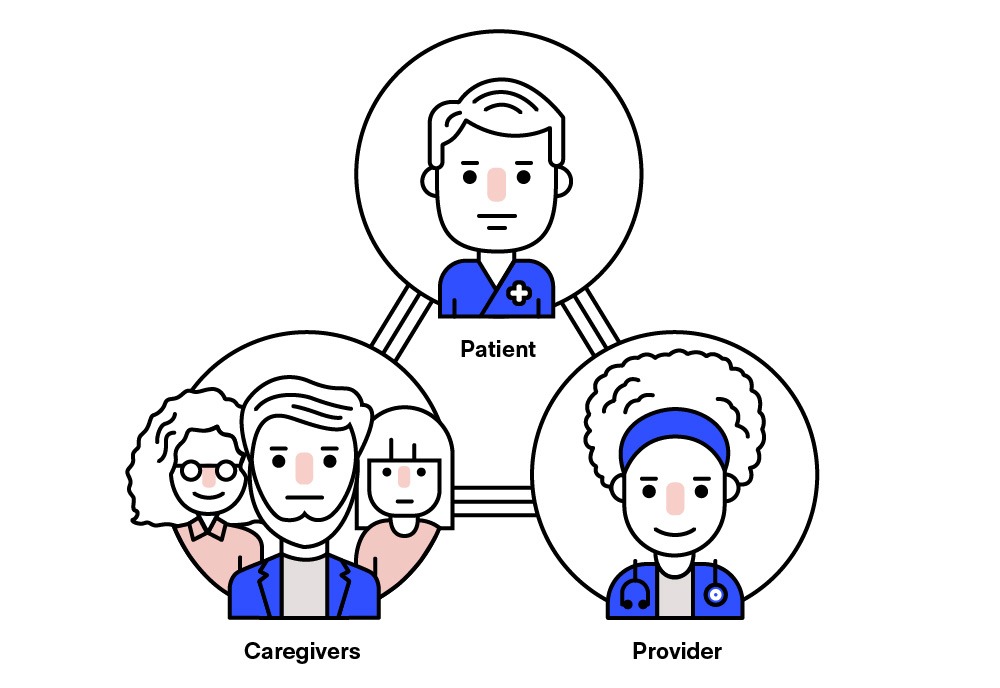
How our healthcare system fails us
Here’s a personal example. My friend, Liz, is struggling to help manage her father’s healthcare. He’s 92 and blind. Liz’s dad has more than a dozen different healthcare providers. It’s overwhelming for him – and for Liz. She’s trying to juggle different systems, calendars, and apps. Overlapping apps and tools don’t provide a seamless exchange of information or come close to interoperability.
Liz has a limited view of her father’s personal health data. Each doctor provides only a slice of the full picture. For Liz to help her father, she needs tools that can provide easy access and greater visibility to her dad’s complete health picture.
Our team at Digital Scientists has begun building solutions that provide this visibility, helping to empower our loved ones. We put the patient at the center of the healthcare ecosystem by creating patient-centric tools that can help people like Liz and her father manage the tangle of complexities. Many of us act as case managers for our loved ones, trying to coordinate providers who don’t necessarily collaborate. It can be a full-time job trying to navigate the healthcare system, and for many in the role of patient or caregiver, it can be a time of uncertainty and emotional turmoil. Now is the time to build integrated tools that can reduce confusion for patients and caregivers, while also improving patient outcomes.
The Healthcare Ecosystem
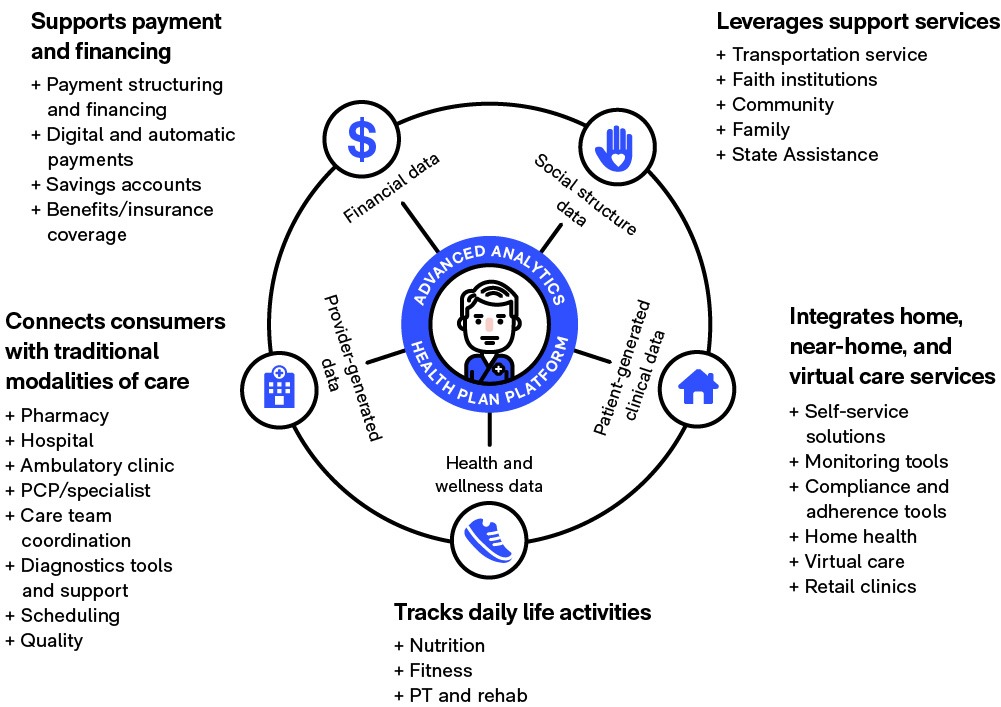
Adapted from McKinsey & Company
Now’s the time for a patient-centric approach to healthcare
There are four reasons why now is the opportune time for software innovators to sharpen their focus on the patient experience – and why we at Digital Scientists are committed to driving patient-centric solutions.

Cures Act gives consumers control over their medical records
Until recently, consumers had little control over their own health records and were unable to access them or coordinate medical care between healthcare providers. In effect, information was locked in individual hospital systems. The 21st Century Cures Act was enacted to give patient’s access to their own protected health information (PHI).
The Cure’s Act supports the seamless and secure access, exchange, and use of electronic health information. The ruling gives patients access to their own health records while also allowing records to be shared with third-party developers, a major push toward interoperability.
With the promise of improved, secure access to PHI, healthcare software developers can build tools that will put the patient first, with a focus on providing patients and caregivers with:
- Transparency into the cost and outcomes of their care
- Competitive options for getting medical care
- Modern smartphone apps provide them with convenient access to their records
- An app economy that provides patients, physicians, hospitals, payers, and employers with innovation and choice
* Office of the National Coordinator for Health Information Technology
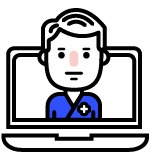
The pandemic accelerated the adoption of telehealth and remote patient monitoring
Thanks to Covid-19, we are all living through a paradigm shift. After resisting telehealth for years, it’s now been thrust upon us. As we’re learning to communicate with our healthcare providers through video conferencing tools, we’ve generally accepted telehealth as the new norm, adopting it broadly across a large cross-section of the country. But it doesn’t have to end there. Just as telehealth allows patients to communicate with their doctors from home, wearables, sensors, and IoT devices provide real-time monitoring and insights for everyone in the care triangle. These devices can serve as critical tools in remote patient monitoring (RPM) and remote therapeutic monitoring (RTM).
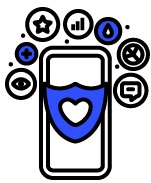
Mobile development frameworks support the secure exchange of health information
As clinicians increasingly rely on patient monitoring devices to improve access to patient information, mobile app development is a key component to accessing that data. Mobile health apps can lead to improved patient outcomes and reduce healthcare costs, but can also lead to concerns about quality assurance, data security, and regulatory compliance.
Apple’s “kit” technologies

Addressing these concerns, Apple has taken a lead in the healthcare space by creating development frameworks for third-party developers. These kit technologies support standardization, data privacy, and security for mobile app development, allowing for a secure exchange of health information within the Apple ecosystem. Using Apple kits, developers can leverage patient health records, remote monitoring devices, and available research to innovate new technology with guardrails in place.

Developers can leverage cloud infrastructure to securely manage electronic health information
As Apple helps to reshape digital healthcare on the promise of secure sharing, its ecosystem currently relies on third-party cloud service providers to ensure that privacy. Cloud service providers have come a long way in their ability to securely store and process large volumes of data. It’s important that mobile healthcare app developers can work in all these spaces. Cloud environments such as Google Cloud, AWS, and Azure, support HIPAA compliance software and are engineered with built-in security features that generally offer more security for PHI than on-premise options – with greater speed and at lower cost.
Developers can innovate in a safe sandbox environment
The timing and combination of these developments now create conditions that allow software developers to innovate in a bigger sandbox. In effect, we’ve created an environment that protects the consumer while empowering developers with opportunities for breakthrough innovation. At Digital Scientists, we want to be a part of that disruption.
We’re committed to building tools that will improve patient outcomes
As technology continues to play a significant role in improving healthcare outcomes, so will Digital Scientists. We know that medical app technology isn’t the entire answer to good health, but we’re confident that we can deliver tools and experiences that will make lives better. Technology should help support and tie together the social determinants of health below. As we continue to design, build, and learn, we promise to work hard to understand the needs of providers, caregivers, and patients as they try to navigate our increasingly complex healthcare system.
Social Determinants of Health

